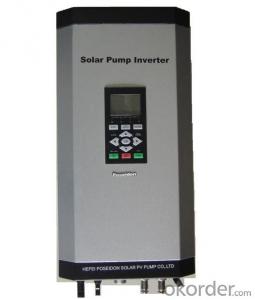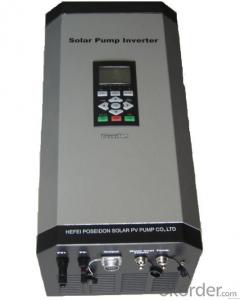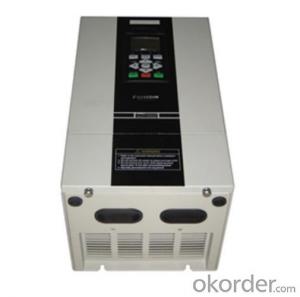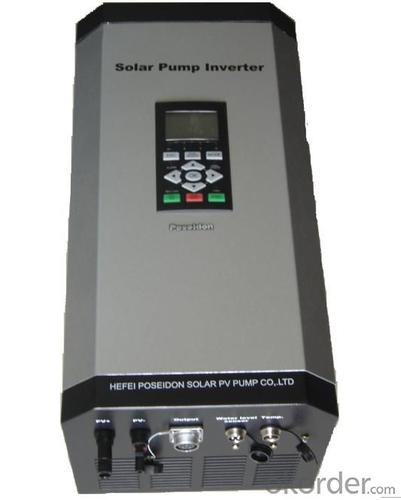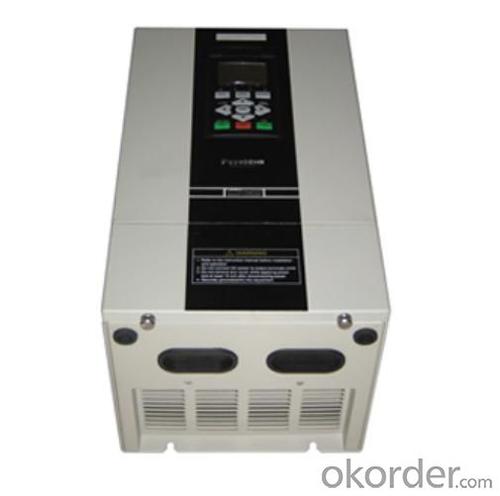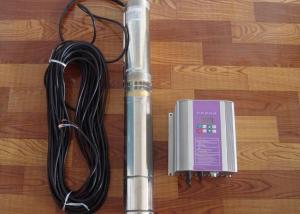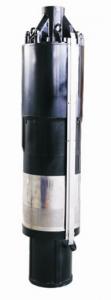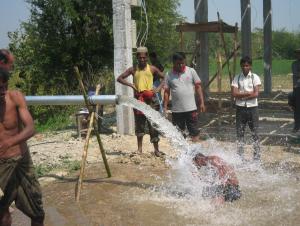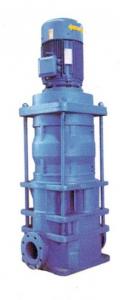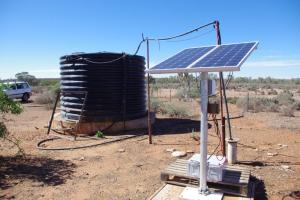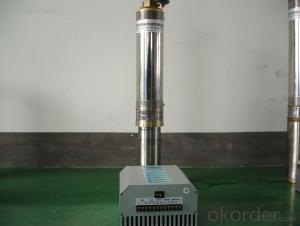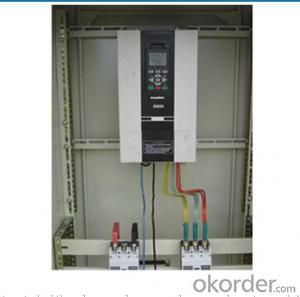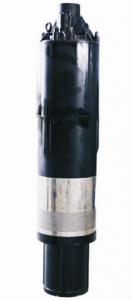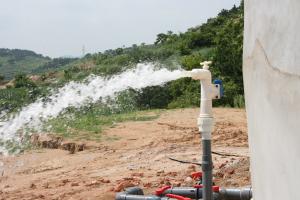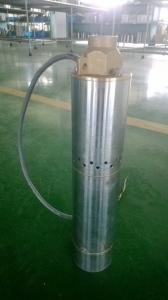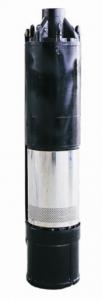Solar Pump for Pool FCPM5K5H Inverter
- Loading Port:
- China Main Port
- Payment Terms:
- TT OR LC
- Min Order Qty:
- -
- Supply Capability:
- -
OKorder Service Pledge
Quality Product, Order Online Tracking, Timely Delivery
OKorder Financial Service
Credit Rating, Credit Services, Credit Purchasing
You Might Also Like
Solar pump inverter FCPM5K5H Product Description:
Product Description:
Solar water pumping system is constructed with solar panel array,solar pump inverter and AC water pump, DC current produced from solar panel will be delivered to solar pump inverter,and it will convert it into AC current to drive water pump,and will automatically regulate output frequency according to sun radiance intensity,maximally realize MPPT tracking function.
Product Features
Adopting the proposed dynamic VI maximum power point tracking (MPPT) control method, with fast response, and reliable operation, achieves efficiency of 99%.
Designed with variable frequency driver, greatly improves efficiency
Extremely high efficiency
Digital mode control, with automatic operation and manual operation mode options
Complete protection functions
Adopts intelligent IPM module, with high reliability
LCD display and operation panel, in real time presents operating data
Optional for water level measurement and control circuit
Applicable for general ACC pumps, like centrifugal pump, piston pump etc.
Independent intellectual property; Highly effective, the redundant reliability, exempts the maintenance and the long life.
The pumps are soft started, fully protected.
No batteries are used. So better Sunlight, more water
Datasheet.
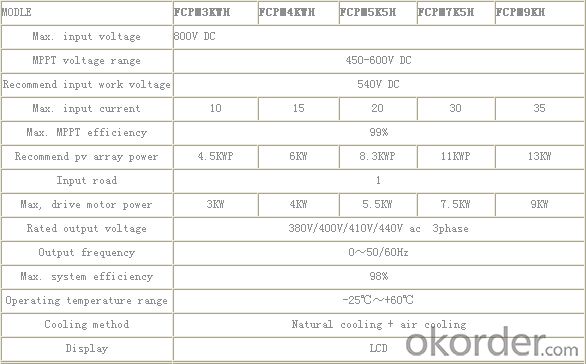
- Q: Can a solar pump be used for water supply in wildlife sanctuaries or conservation areas?
- Yes, a solar pump can be used for water supply in wildlife sanctuaries or conservation areas. Solar pumps are a sustainable and eco-friendly alternative to traditional pumps that rely on fossil fuels or electricity from the grid. They harness solar energy to power the pump, allowing for a constant and reliable water supply without harming the environment or disrupting the natural habitat of the wildlife. Solar pumps can be installed in remote or off-grid areas, making them ideal for wildlife sanctuaries or conservation areas that may not have access to traditional sources of electricity. Additionally, solar pumps require minimal maintenance and have a long lifespan, making them a cost-effective and efficient solution for providing water to wildlife in these protected areas.
- Q: Can a solar pump be used in areas with freezing temperatures?
- Yes, a solar pump can be used in areas with freezing temperatures. However, it is important to consider the type of solar pump used and take preventive measures to protect it from freezing. This can include insulating the pump, using anti-freeze solutions, or installing a frost protection system to ensure proper functioning during cold weather conditions.
- Q: What is the maximum number of hours a solar pump can operate continuously?
- The maximum number of hours a solar pump can operate continuously is dependent on various factors such as the capacity of the solar panels, the battery storage capacity, and the efficiency of the pump system. However, in ideal conditions with sufficient sunlight and battery capacity, a solar pump can operate continuously for 24 hours a day.
- Q: Can solar pumps be used for firefighting purposes?
- Yes, solar pumps can be used for firefighting purposes. Solar-powered pumps are efficient and reliable alternatives to traditional pump systems, providing a sustainable and cost-effective solution for water supply during firefighting operations. These pumps can be deployed in remote areas without access to grid power, ensuring a continuous water supply for firefighting efforts.
- Q: How does a solar pump handle water with high levels of calcium or magnesium?
- A solar pump can handle water with high levels of calcium or magnesium without any issues. The pump's mechanism does not get affected by the presence of these minerals, and it continues to function as usual, efficiently pumping water using solar energy.
- Q: Can a solar pump be used for water supply in refugee camps or temporary settlements?
- Certainly, water supply in refugee camps or temporary settlements can be effectively achieved using solar pumps. These pumps offer a sustainable and economical solution, especially in areas where access to conventional electricity may be limited or unreliable. Solar pumps are powered by solar energy, obviating the need for fuel or electricity. They consist of photovoltaic panels that convert sunlight into electricity, which in turn is used to operate the pump, extracting water from wells, boreholes, or other water sources. The water can be stored in tanks or distributed directly to the community through a network of pipes. Using solar pumps in refugee camps or temporary settlements offers numerous advantages. Firstly, they are environmentally friendly, emitting zero greenhouse gases and reducing reliance on fossil fuels. This not only aids in combating climate change, but also minimizes the risk of fuel shortages or price fluctuations that could disrupt water supply. Secondly, solar pumps are simple to install and maintain. They do not require complex infrastructure or extensive wiring, making them suitable for remote or challenging locations. Additionally, they have a long lifespan and require minimal maintenance, ensuring uninterrupted water supply with minimal downtime. Moreover, solar pumps are highly reliable. As long as there is sufficient sunlight, they can operate consistently, providing a dependable water supply to meet the needs of the refugee camp or settlement. They can also be equipped with battery storage systems to ensure water supply during cloudy periods or at night. Lastly, solar pumps offer long-term cost savings. Although the initial installation costs may be higher compared to traditional pumps, solar pumps have lower operational and maintenance expenses. They do not require fuel, and the only ongoing expenditure is occasional maintenance and replacement of components. In conclusion, solar pumps are an excellent choice for water supply in refugee camps or temporary settlements. They are sustainable, reliable, and cost-effective, providing a consistent source of water without relying on conventional electricity supply. Their installation and maintenance are straightforward, making them an ideal solution for remote and challenging locations.
- Q: Can a solar pump be used for pool heating?
- Yes, a solar pump can be used for pool heating. Solar pumps are designed to circulate water using energy from the sun, making them an environmentally friendly and cost-effective option for pool heating. The solar pump works by capturing the heat from the sun and transferring it to the pool water as it circulates through the pump. This process helps to increase the temperature of the pool water, providing a comfortable swimming experience even during cooler months. Additionally, solar pumps require little to no maintenance and have a long lifespan, making them a popular choice for pool owners who want to reduce their energy consumption and save on heating costs.
- Q: How does a solar pump handle water pressure regulation?
- A solar pump handles water pressure regulation through a combination of mechanisms. It typically includes a controller that monitors and adjusts the speed of the pump based on the water demand. This allows the pump to maintain a steady water pressure by adjusting the flow rate accordingly. Additionally, some solar pumps may have built-in pressure sensors or valves that help regulate the water pressure by controlling the pump's operation. Overall, these mechanisms ensure that the solar pump effectively handles water pressure regulation in a reliable and efficient manner.
- Q: How does a solar pump handle water with high levels of chlorine?
- A solar pump does not specifically handle water with high levels of chlorine. However, if water with high chlorine content is being pumped using a solar pump, it would operate similarly to any other pump. The pump's main function is to circulate water, irrespective of its chlorine levels.
- Q: What is the maximum depth that a solar pump can draw water from?
- The maximum depth that a solar pump can draw water from varies depending on the specific model and its specifications. However, on average, solar pumps are capable of drawing water from depths of up to 100 to 200 feet (30 to 60 meters).
Send your message to us
Solar Pump for Pool FCPM5K5H Inverter
- Loading Port:
- China Main Port
- Payment Terms:
- TT OR LC
- Min Order Qty:
- -
- Supply Capability:
- -
OKorder Service Pledge
Quality Product, Order Online Tracking, Timely Delivery
OKorder Financial Service
Credit Rating, Credit Services, Credit Purchasing
Similar products
Hot products
Hot Searches
Related keywords
